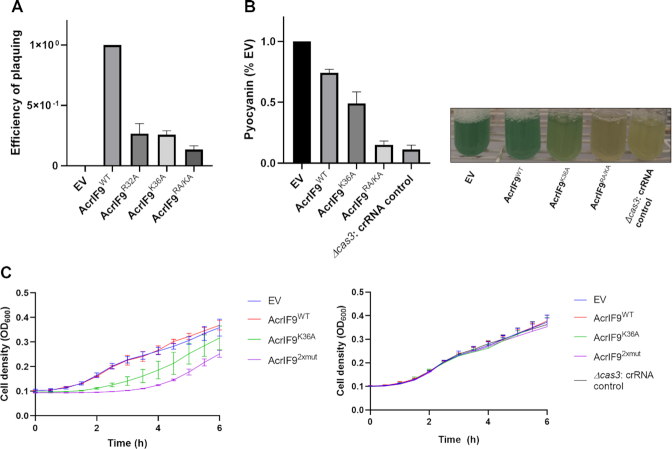Figure 5.
Effects of AcrIF9 mutants on the type I-F CRISPR–Cas system in vivo. (A) The relative efficiency of plaquing of phage DMS3m on lawns of P. aeruginosa PA14 cells are shown. This strain possesses a type I-F CRISPR–Cas system targeting this phage. Cells were transformed by plasmids expressing the indicated AcrIF9 mutants. The efficiency of plaquing is calculated by dividing the plaque forming units (p.f.u.) per ml of DMS3m when plated on cells expression a mutant AcrIF9 by the p.f.u./ml of DMS3m obtained on cell where wild-type AcrIF9 was expressed. (B) PA14 WT or PA14 Δcas3 cells were transformed by plasmids expressing the indicated AcrIF9 mutants and a crRNA targeting the promoter region of phzM. The amount of pyocyanin produced was quantitated as a percentage of the same strain with the empty vector (EV) control. Pictures are representative cultures are shown on the right. (C) Growth curves are show for PA14 WT (left), or PA14 Δcas3 (right) cells transformed with the same plasmids used in part (B). Optical densities at 600 nm were measured every 30 min for 6 h. 10 mM arabinose was added to induce expression of crRNA and Acr from the plasmid. In parts (A), (B) and (C), an average of three independent experiments is shown with the error bars representing SD.

